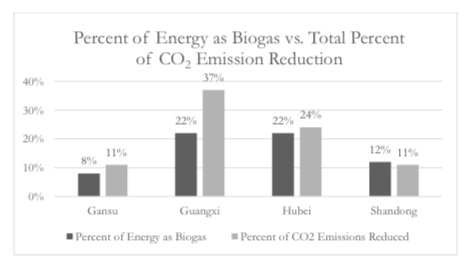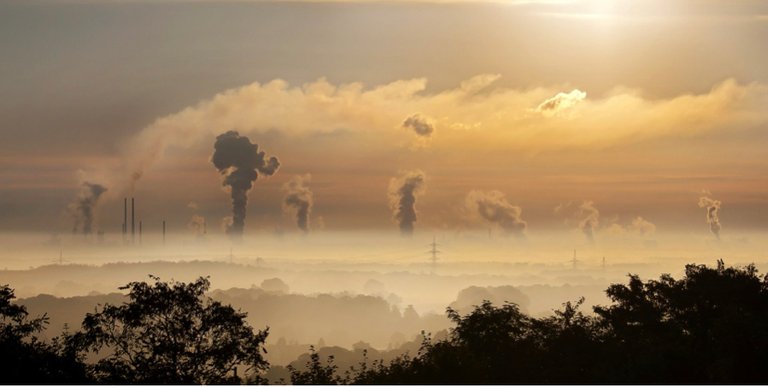The Effectiveness of Small-Scale Anaerobic Digesters in Reducing Carbon Dioxide Emissions (VI)
Welcome to the #stemsunday edition of my anaerobic digester series, if you would like to see the introduction post please click here.
Yet again a day late, sorry! Can I blame the holidays?
Click here for Part II.
Click here for Part III.
Click here for Part IV.
Click here for Part V.
This is Part VI of my series.
Today, we will pick up where we left off discussing a case study done in China and their use of small scale digesters.
There have been two periods in China’s past where there has been a construction boom of ADs, the first being in 1970 and the second occurring 30 years later in 2000.
The most recent estimates put the total number of household ADs at 40 million which falls short of the government’s 50 million objective total that was originally planned for.
However, the current goal is to increase the total number to 80 million by the year 2020 (I checked around a little bit and it looks like they are close Once, I have a better source I will post an update).
In the year 2000, and currently still, it is the goal of the Chinese government to promote house hold biogas use in order to improve the quality of life in the rural areas, as well as to reduce the environmental effects from the continued use of low quality fuels.
Another goal specifically assigned by the biogas policy, is to reduce the effects of climate change and the direct relation to the reduction of CO2 emissions and other harmful emissions of GHGs. The case study pointed out the two major influences on climate change being reduced by the implementation of new Chinese policies, which are CH4 emissions reductions and CO2 emission reduction.
By harvesting and collecting manure to capture the methane it produces and them converting it to gas to be burned off in household kitchens, the emissions are greatly reduced. Once the organic matter is harvested and converted to energy producing CH4, people will no longer have to rely primarily on burning fuels that emit CO2, such as coal and wood.
Additionally, by reducing the need to burn wood for fuel and heat, the Chinese people can begin to regain valuable forest lands that have been lost due to degradation which will ultimately lead to the increased sequestration of CO2 from the atmosphere (Gosens et al., 2013).
The rural Chinese case study used guidelines set by the Intergovernmental Panel on Climate Change (IPCC) in order to compute the estimated amount of emissions of GHG reduced by implementing ADs and therefore reducing the amount of low energy fuels that are consumed. In the province of Gansu 8% of their energy comes from ADs resulting in a 11% reduction of CO2 emissions, in Guangxi 22% of their energy comes from ADs resulting in a 37% reduction of CO2 emissions, in Hubei 22% of their energy comes from ADs resulting in a 24% reduction of CO2 emissions, and in Shandong 12% of their energy comes from ADs resulting in a 11% reduction of CO2 emissions.
One factor that was measured to show a reduction of CO2 emissions, in this study, was the reduction of the consumption of wood in each province. This was calculated by showing the fuel wood consumption of households that had ADs versus those whom did not.
In Gansu, the wood consummation was reducted by 33%, in Guangxi 32%, in Hubei 37%, and in Shandong 64%.
The graph below from 2010 shows a comparison of the percentage of energy produced by ADs as biogas along with the resulting reduction of CO2 emissions for each province that was studied (Gosens et al., 2013).
 I made this graph
I made this graph
Just a few more lose ends to tidy up on the China study in next weeks edition. Stay tuned!
Sources of Entire Thesis
Abu-Dahrieha J., A. Orozcob, E. Groomb, and D. Rooneya, 2011. Batch and continuous biogas production from grass silage liquor. Bioresource Technology, 102(23):10922-10928.
Arthur R., M. F. Baidooa, and E. Antwib, 2011. Biogas as a potential renewable energy source: A Ghanaian case study. Renewable Energy, 36(5):1510-1516.
Berglund M. and P. Borjesson, 2005. Assessment of energy performance in the life-cycle of biogas production. Biomass and Bioenergy, 30:254-266.
Energy Information Administration (EIA), 2009.
Emissions of greenhouse gases in the United States. Hazardous Waste Consultant, 29(5):1.5-1.20.Gosens, J., Y. Lu, G. He, B. Bluemling, and T.A. Beckers, 2013. Sustainability effects of household-scale biogas in rural China. Decades of Diesel, 54:273–287.
Govasmark E., J. Stäb, B. Holen, D. Hoornstra, T. Nesbakk, and M. Salkinoja-Salonend, 2011. Chemical and microbiological hazards associated with recycling of anaerobic digested residue intended for agricultural use. Waste Management, 31(12):2577-2583.
Lansing S., R.B. Botero, J.F. Martina, 2007. Waste treatment and biogas quality in small-scale agricultural digesters. Bioresource Technology, 99(13):5881-5890.
Naja G.M., R. Alary, P. Bajeat, G. Bellenfant, J.J. Godon, J.P. Jaeg, G. Keck, A. Lattes, C. Leroux,
H. Modeloni, M. Moletta-Denatj, O. Ramalhoj, C. Roussellei, S. Wenischc, and I. Zdanevitchk, 2011. Assessment of biogas potential hazards. Renewable Energy, 36(12):3445-3451.Odlare M., V. Arthurson, M. Pell, K. Svensson, E. Nehrenheim, and J. Abubaker, 2011. Land application of organic waste – Effects on the soil ecosystem. Applied Energy, 88(6):2210-2218.
Peura P. and T. Hyttinen, 2011. The potential and economics of bioenergy in Finland. Journal of Cleaner Production, 19:927-945.
Rennuit, C. and S.G. Sommer, 2013. Decision support for the construction of farm-scale biogas digesters in developing countries with cold seasons. Energies, 6(10):5314-5322.
Till J., A. Königb, and L. Eltropa, 2014. Bioenergy villages in Germany: Bringing a low carbon energy supply for rural areas into practice. Renewable Energy, 61:74-80.
Wang C.B. and L.X. Zhang, 2012. Life cycle assessment of carbon emission from a household biogas digester: Implications for policy. Procedia Environmental Sciences, 13:778 – 789.
Weichgrebe D., I. Urban, and K. Friedrich, 2008. Energy- and CO2-reduction potentials by anaerobic treatment of wastewater and organic kitchen wastes in consideration of different climatic conditions. Water and Science Technology, 58(2):379-384.
Zhang L.X., C.B. Wang, and B. Song, 2013. Carbon emission reduction potential of a typical household biogas system in rural China. Journal of Cleaner Production, 47:415-421.
Stem Sunday
Please check out the #stemsunday initiative by @stem.curate here.



This is nonsense. Burning methane also produces CO2. You could argue that capturing methane is easier than capturing CO2 and burning methane is more efficient, but it does not ultimately reduce CO2 emissions unless it's never burned.
Yes it was badly phrased but coal and wood have higher water content so you need to burn much more to produce the same levels of heat/energy. So burning methane does reduce co2 emissions because less CO2 is emitted.
Yeah that makes perfect sense sir badger!
Very interesting stuff sir badger and great images to go along with it also!
Thank you very much! Much appreciated
Posted using Partiko iOS